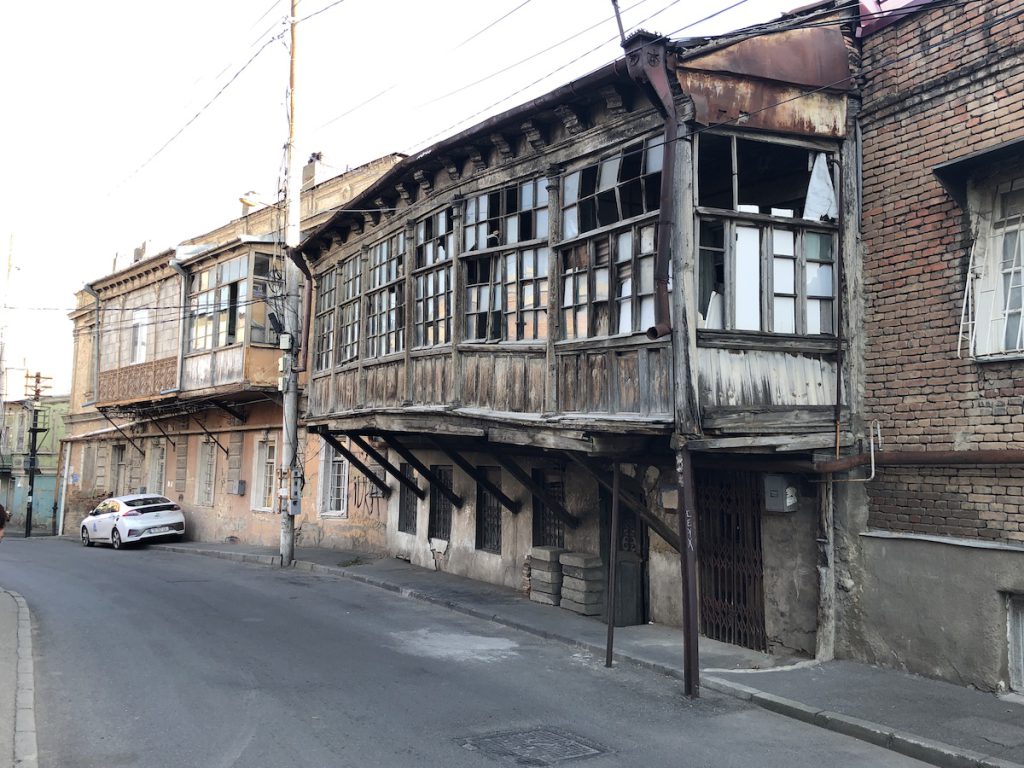
I was getting used to the cool dimness of our rented flat on Revaz Tabukashvili Street, with its taciturn owner who was only talkative when scented with vodka, but our time in Tbilisi was drawing to a close.
We slept late, and walked over to the Dry Bridge, where mismatched items were being laid out on plank tables or plastic sheets on the ground. It was the same sort of trinkets I’d find at flea markets back in Berlin, down to mismatched dishes and Communist relics, with paintings and copies of paintings occupying the park below.
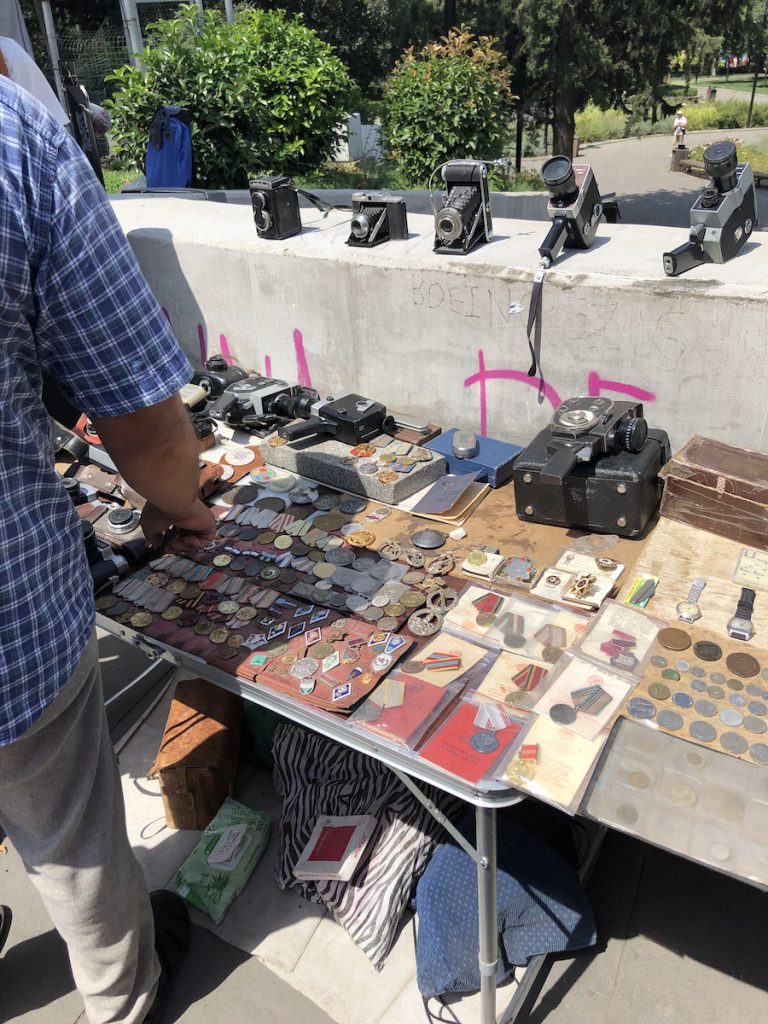
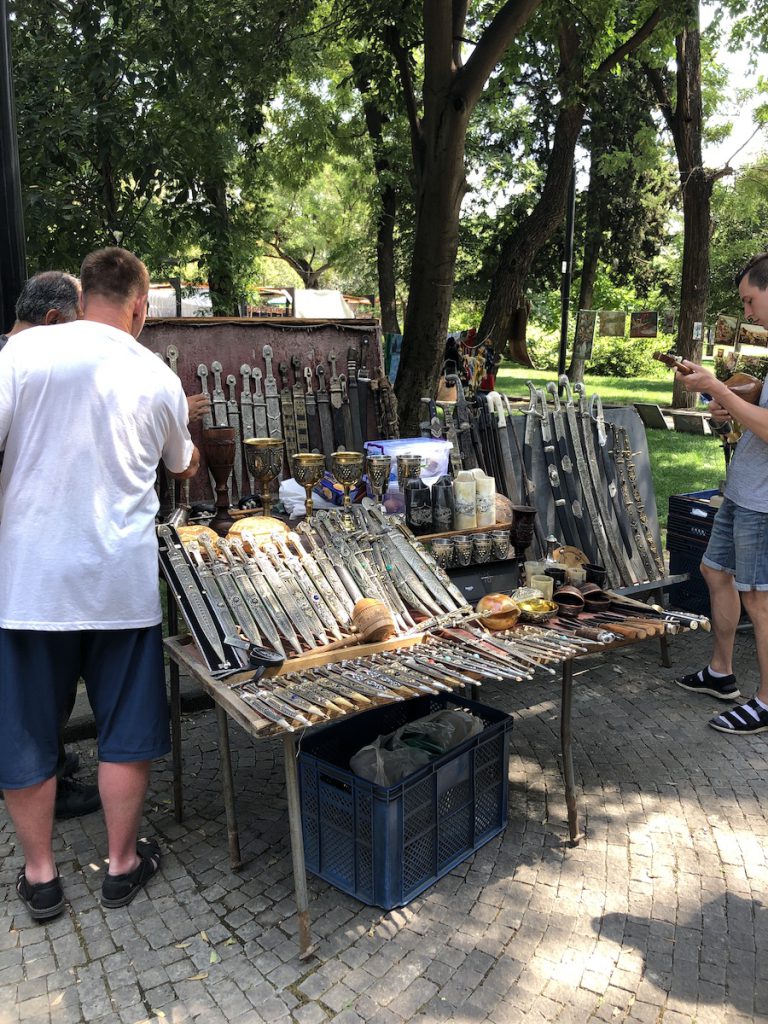
There weren’t many vendors yet at 10:30am, and so we walked to the National Museum for a look at the 4th floor exhibit on the Soviet occupation of Georgia.
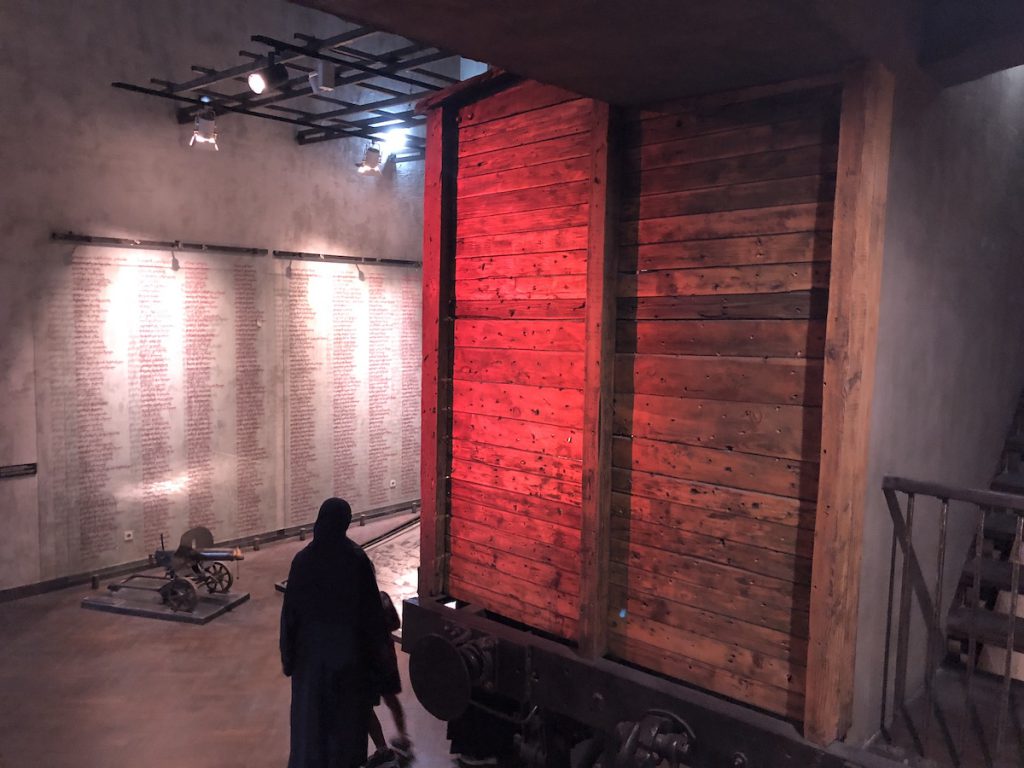
A bullet-riddled railway carriage at the entrance memorialized the prisoners who’d been herded inside the wooden-slatted cattle car and machine-gunned so thoroughly it resembled a colander on iron wheels. But the rest of the exhibit, housed in a grim grey-painted room, was papered in documents we couldn’t read.
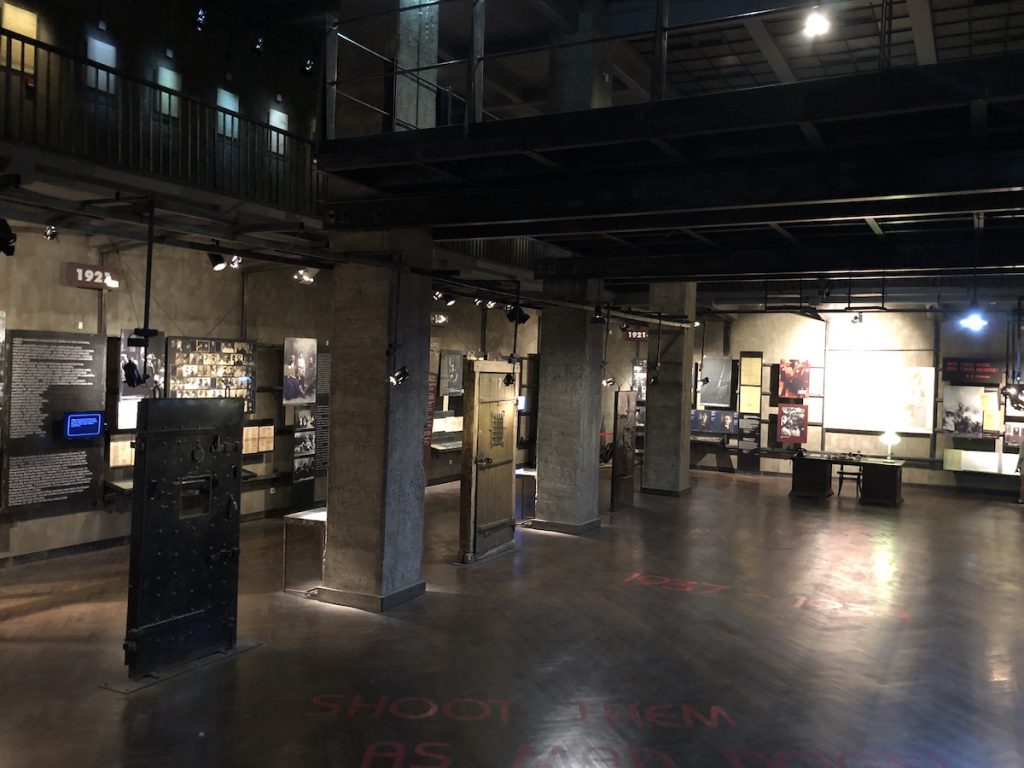
Wandering through the heat required solid fuel, and so it was back to the Dry Bridge for plates of khinkali at Daphna, which serves some of the city’s best dumplings.
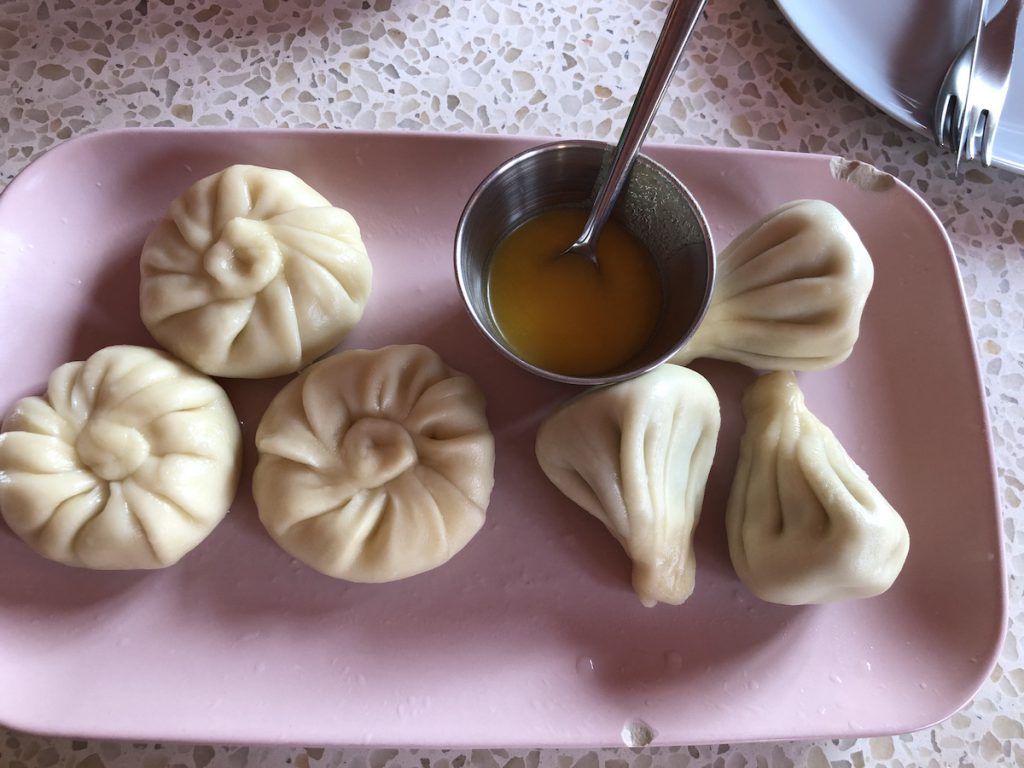
Tbilisi’s location on the banks of the Kura River, between Europe and Asia, was perfectly placed to tap into Silk Road trade during the 6th century, when the Byzantines and Persians were at each other’s throats.
The city’s turbulent history was doomed to be one of conquest, and the Byzantines and Persians weren’t the only ones who sought to control it. The Khazars, Umayyads, Abbasids, Mongols, Ottomans and Tsarist Russians all came here, too.
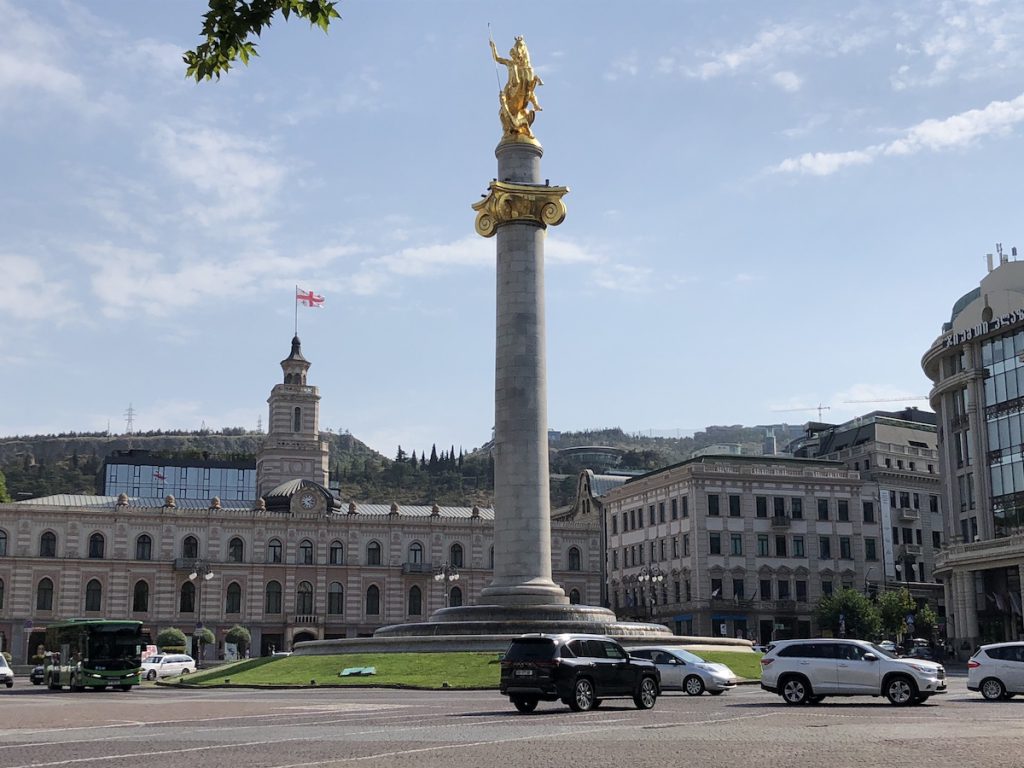
This mix is reflected in Tbilisi’s buildings, a blend of neoclassical, Art Nouveau, medieval and Stalinist are jumbled together in a fascinating mix of balconies, courtyards, wood and brick.
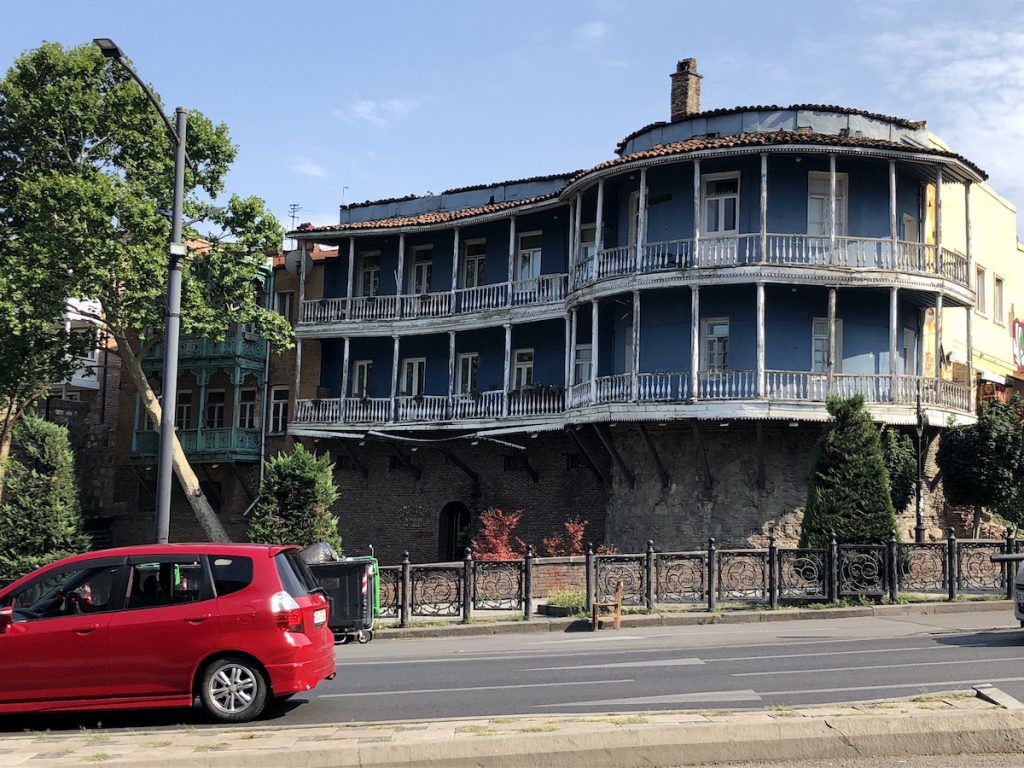
The old town struggles up the side of a rocky plateau in a dense maze of multi-layered dwellings threaded by stairways that give indirect access to the upper layers.
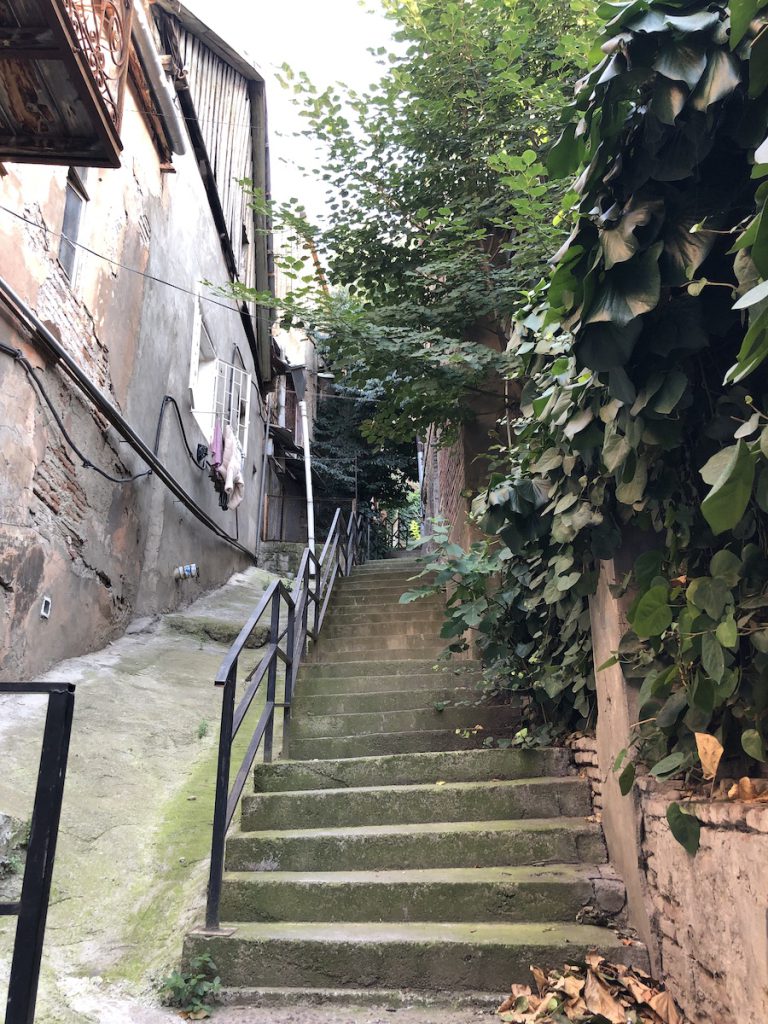
The overheated air smelled of burned dust and hints of bread as we walked down narrow streets and poked quietly into alleyways and courtyards.

A stray dog shuffled past with its head hung down, pausing to bark at a rival before moving on. The streets were full of these animals, but all wore ear tags and none had gone feral. Residents occasionally stopped to pat one on the head.
We popped into a farm co-op to buy two sticks of churchkhela and a sheet of tklapi from an old lady, and met a Russian student in a long black coat who said he’d come all the way from Moscow just to stock up on Georgian foods.
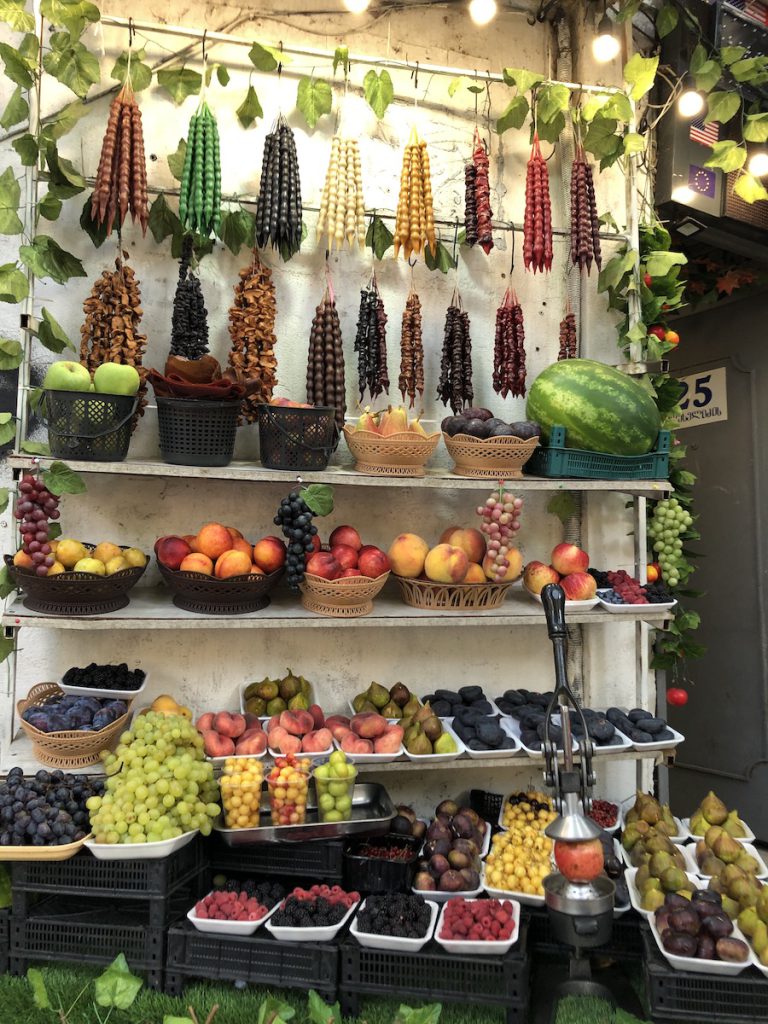
Churchkhela, which everyone was quick to tell us is ‘Georgian Snickers’, looks like a long, lumpy pea pod (or if brown, a lumpy turd). It’s made from walnuts or hazelnuts threaded on a string and dipped repeatedly into a mix of grape juice, honey and flour.
Tklapi is a natural version of that 1990’s school lunch staple, the fruit roll-up. Grape juice thickened with flour is spread on a sheet and dried in the sun until it resembles shoe leather. If I’m ever forced to eat my boots on a winter retreat from Moscow, I hope it tastes like this.

There wasn’t much to do except trudge around in the heat. When we’d grown tired of walking, we ate fresh figs and enormous ripe peaches in a backstreet park where stray dogs lifted their heads to check out the food, but it was just too hot to drag themselves up from the shallow excavations they’d scraped in the dirt.
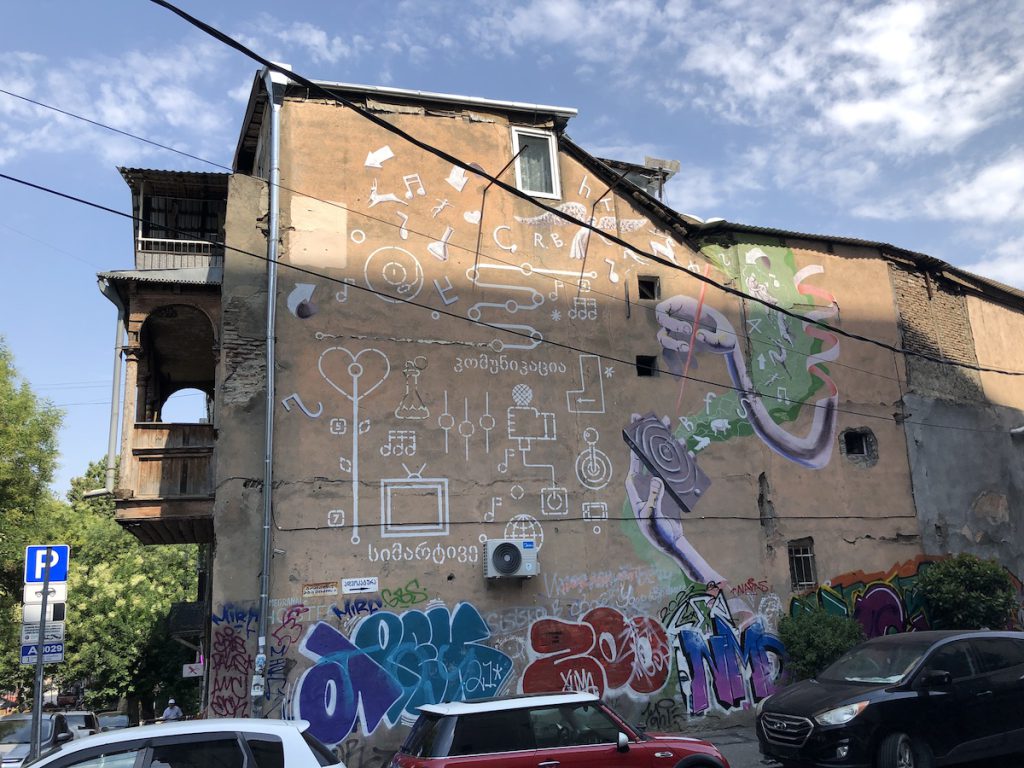
We crossed the river for dinner again, back to Mapshalia, which was packed to the gills with hungry customers and hot as a kitchen in hell’s lower reaches.
I dined like a medieval king on beef in walnut sauce, and a plate of ghomi — cornmeal mixed with sulguni cheese to a point where it resembled rubber — washed down with a pitcher of wine.
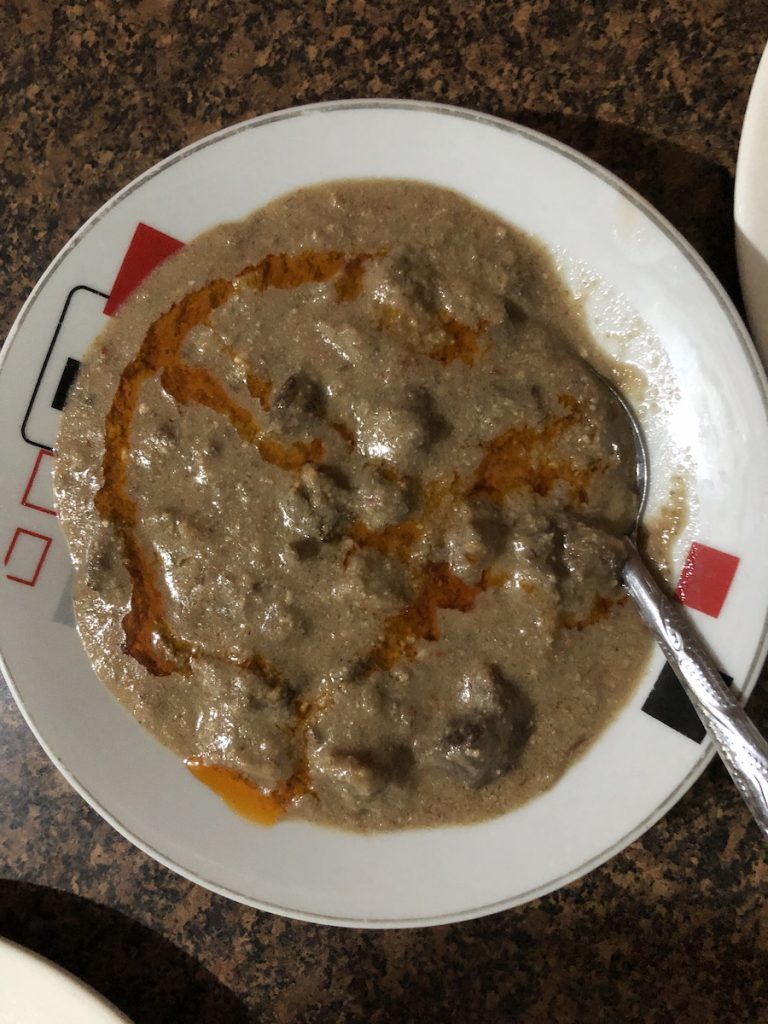

We would be be leaving for Kutaisi on the early morning train.
Photos © Tomoko Goto 2023
